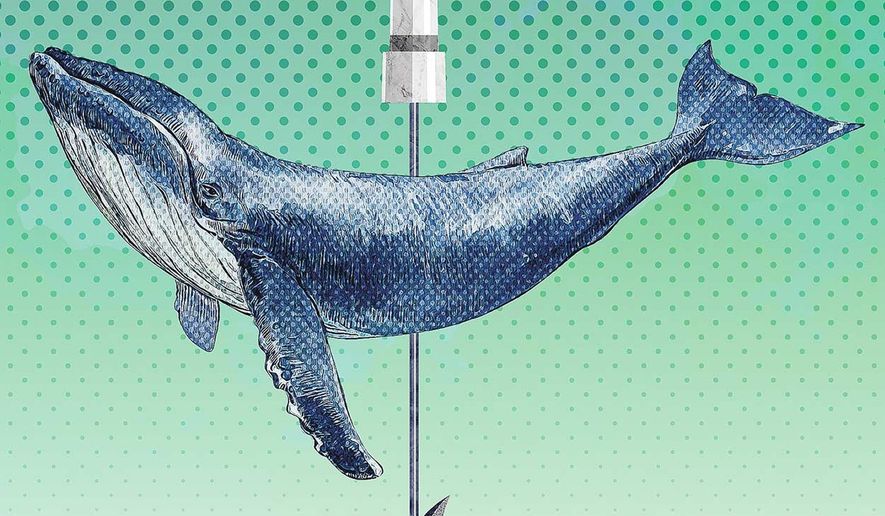OPINION:
The following analysis is part of The Washington Times’ Voter Guide, which outlines the candidates’ positions on the most important policy topics.
Solving difficult environmental problems is at the top of the agenda for former President Donald Trump and Vice President Kamala Harris. But they don’t agree on what saving the environment means. The environmentalist movement used to be about purging the air, land and water of the nastier byproducts of industry.
Over the decades, however, technological advances have cleaned up these processes, leaving behind measurably clearer skies. Activists responded by adopting a new mission: climate change.
Unlike her opponent, Ms. Harris embraces the new mission, citing extreme weather as validation for her concern. “If you track the way this is happening, it’s getting worse,” she said in a telephone interview with The Weather Channel during Hurricane Milton.
At a town hall in 2020, she conveyed the same sentiment, explaining, “If I think about the world if we don’t act, I’m really afraid.” Her plan of action is modeled around the Green New Deal, which the Biden-Harris administration has since begun implementing.
“I have always believed … that the climate crisis is real, that it is an urgent matter, to which we should apply metrics that include holding ourselves to deadlines around time,” she told CNN in August. “We did that with the Inflation Reduction Act.”
At last year’s U.N. Climate Change Conference in Dubai, she described that bill’s $1 trillion in spending as “the largest investment in climate not only in the history of our country but in the history of the world.”
Her climate plan “advances environmental justice, protects public lands and public health, increases resilience to climate disasters, lowers household energy costs, creates millions of new jobs, and continues to hold polluters accountable to secure clean air and water for all,” according to the vice president’s campaign website.
She also touts her record of changing the rules to rush approval for green energy projects without the customary environmental scrutiny. The administration adopted a rule to “streamline the National Environmental Policy Act review process, and pushed to increase the number of projects that qualify for the simplest form of environmental review.”
Mr. Trump isn’t a fan of how the Biden-Harris administration has been boosting these projects.
“The only thing they’re successful at is wasting money on the Green New Scam,” the former president said at an Oct. 12 roundtable discussion in Las Vegas.
While the current administration has spent $1 trillion on the Green New Deal thus far, Mr. Trump says that’s just the start for Democrats: “The actual number is $93 trillion. That’s what they want.”
He cites numbers from Douglas Holtz-Eakin, the economist who heads the American Action Forum. The deal’s promise to change America’s entire energy grid, achieve “net zero” emissions in transportation and guarantee everyone will have green housing adds up to a massive expense.
“They never even studied the environment,” Mr. Trump said. “They just come up with things like … no windows in buildings. They have some ‘wonderful’ plans for this country. Honestly, they’re crazy, and they’re really hurting our country badly.”
Mr. Trump prefers to return to something more like the traditional “save the whales” environmentalism. He says the new environmentalists are fine with setting up giant windmill farms offshore, where the sound and vibrations confound the whales.
Certain fact-checking organizations pretend this isn’t happening, but the National Marine Fisheries Service just renewed an “incidental harassment authorization” allowing a single windmill company to kill up to 100 endangered whales, 3,910 seals and 9,721 dolphins off the New Jersey shore.
Windmills are also being installed on mountaintops, where they slice endangered eagles. “They’re all over the place on the gorgeous Pennsylvania countryside,” Mr. Trump said. According to the Nuclear Energy Institute, it takes 360 times as much land to generate a sustained megawatt of electricity with windmills as it does to do so with a nuclear reactor.
Speaking in Michigan earlier this month, the Republican candidate said he wants to improve land allocation by allowing construction of new housing on unused federal land. Uncle Sam is incapable of properly caring for the vast swaths of territory under its ownership in Western states.
In Alaska, Idaho, Nevada, Oregon and Utah, for example, the federal government owns more than half the land. “We will set up special zones on federal land with ultra-low taxes and regulations for American producers,” the former president said, adding that “we have to do it, and we’ll do it quickly.”
This is an area of potential agreement between the two sides. According to a Democratic campaign press release from August, “Vice President Harris will also take action to make certain federal lands eligible to be repurposed for new housing developments that families can afford.”
Voters can decide next month who they think will put that land to better use.





Please read our comment policy before commenting.